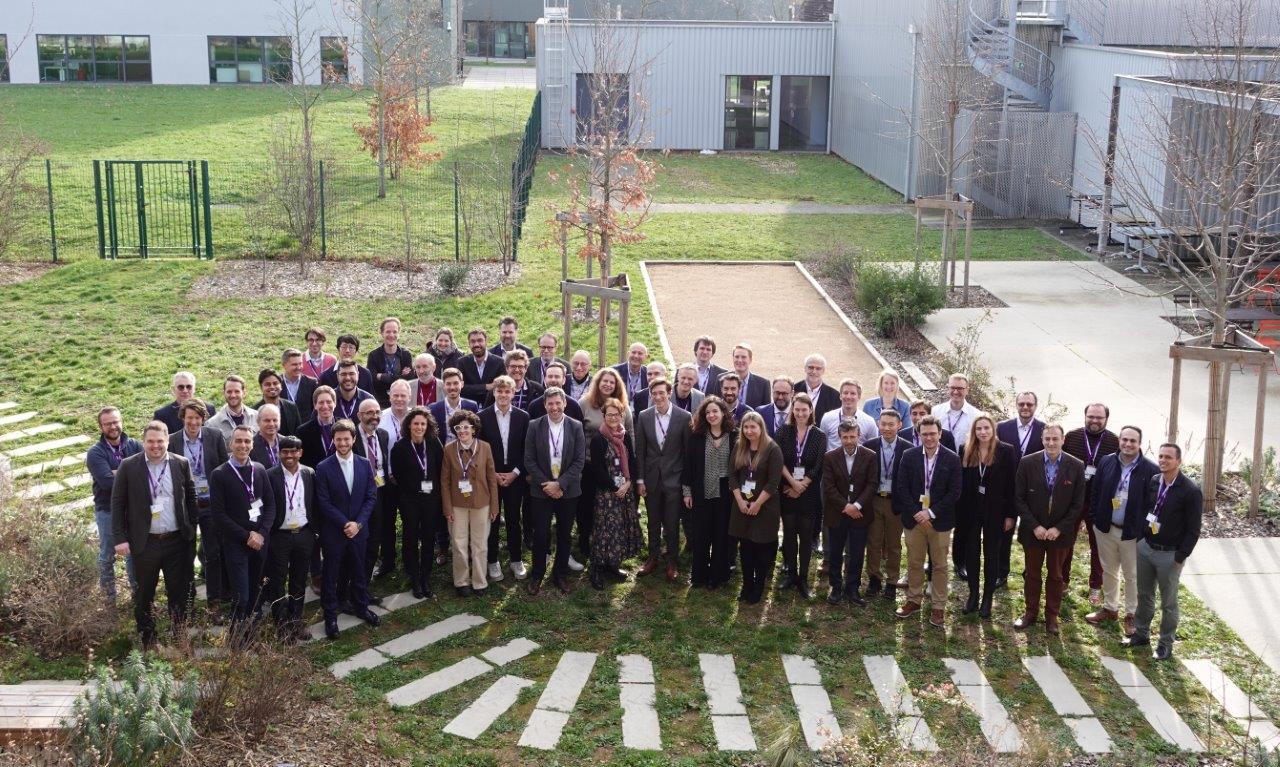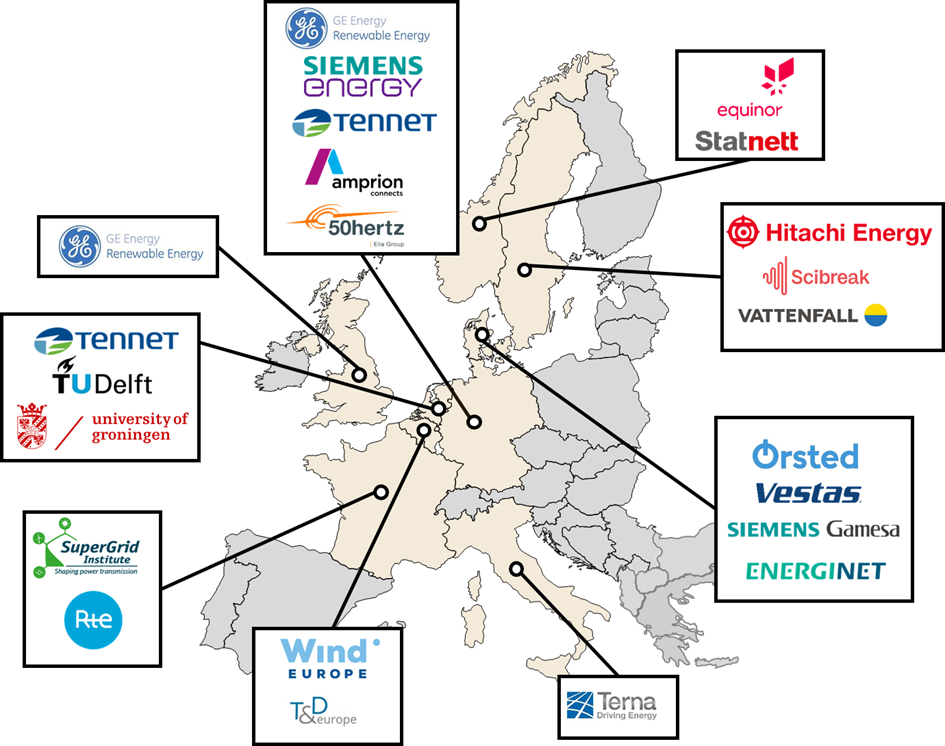[Press release] Successful kick-off of EU-funded project to define technical frameworks and standards for electricity transmission and accelerate the integration of renewable energy
The European Union wants to deploy 300 GW of offshore wind by 2050 to meet its climate targets and to reduce its dependence on fossil fuel. The most efficient way of transporting electricity from offshore wind is via multi-terminal high voltage direct current (HVDC) grids. Under the EU’s “Horizon Europe” funding scheme the InterOPERA project will define future interoperability standards for electricity grids. The project was officially launched this week with a kick-off meeting in Lyon, France.
For the European Union to deliver on its 300 GW offshore wind capacity target by 2050 future offshore transmission systems will not only transmit electricity to shore but will also serve as interconnectors between member states. These multi-purpose multi-terminal high voltage direct current (HVDC) systems combine benefits in a cost-effective way. They make the integration of renewables into the electricity system more effective. And they increase market security and resilience. Ensuring that HVDC systems, HVDC transmission systems or HVDC components from different suppliers can work together – making them “interoperable”- is a top priority to accelerate Europe’s energy transition.
The project “Enabling interoperability of multi-vendor HVDC grids” (InterOPERA), funded by the EU programme for research and innovation, unites more than 20 European partners to unlock these HVDC grids and pave the way for the first real-life projects in Europe. The project was officially launched on 17-19 January 2023 with a kick-off meeting in Lyon, France.

InterOPERA’s main objective is to make future HVDC systems mutually compatible and interoperable by design, and to improve the grid forming capabilities of offshore and onshore converters. Future HVDC systems will be modular. Thanks to common functional specifications and standard interfaces, modules based on different technologies and modules supplied by different manufacturers will be able to integrate seamlessly and operate together.
InterOPERA is not only about developing technical standards but also about agreeing on the procurement, commercial, legal and regulatory frameworks that will facilitate the tendering, building and operation of full-scale HVDC multi-terminal, multi-vendor, multi-purpose real-life applications anticipated by 2030.
To achieve this, InterOPERA engages diverse high-level industry actors at the forefront of renewable energy development and grid management. InterOPERA is a joint initiative involving eight TSOs, three offshore wind developers, four HVDC equipment manufacturers, two wind turbine manufacturers, two sector associations, two universities under the coordination of a research and innovation institute. The composition of this consortium is the best prerequisite to reach alignment over the whole value chain as soon as possible and to pave the way for a development where Europe continues to play the leading role in developing these technologies.

As the first step in the 4-year project timeline InterOPERA will analyse planned HVDC projects to define a demonstrator case study. The resulting system-level design will be used as a guide to coordinate network planning. This new way of framing the European grid architecture and topology will ensure compatibility and scalability so that future system expansion projects can be managed seamlessly.
InterOPERA will de-risk the interoperability of control and protection systems through the development and implementation of a real-time physical demonstrator. This will deliver tangible results: detailed functional specifications for each subsystem, standardised models, simulation platforms and interaction study processes as well as multi-vendor cooperation agreements. InterOPERA will generalise these frameworks into operational and strategic tools and will make them available to all European stakeholders to accelerate the development of multi-terminal HVDC grids.
“The large-scale development of offshore renewable energy will be essential to reach our European Union climate and energy targets and to reduce our dependence on energy imports. The interoperable HVDC technologies to be demonstrated by the InterOPERA project will be a key enabler for the meshed connection of those offshore wind farms to the European power grid”
“InterOPERA’s ultimate aim is to deliver solutions for all HVDC projects stakeholders, that are directly exploitable to tender, build and operate the first multi-vendor HVDC grid systems in Europe”
![]() This project has received funding from the European Union’s Horizon Europe research and innovation programme under grant agreement No. 101095874.
This project has received funding from the European Union’s Horizon Europe research and innovation programme under grant agreement No. 101095874.
Project Partners: Amprion, Delft University of Technology, Energinet, Equinor, GE Renewable Energy, Hitachi Energy, Ørsted, RTE Réseau de Transport d’Electricité, SCiBreak, Siemens Energy, Siemens Gamesa, Statnett, SuperGrid Institute (coordinator), TenneT, Terna, T&D Europe, University of Groningen, Vattenfall, Vestas, WindEurope, 50Hertz.
Contact:
Sébastien Silvant
Project Coordinator – InterOPERA
Email: name.surname@supergrid-institute.com
Phone: +33 6 98 63 72 92


